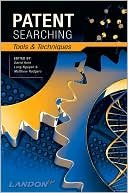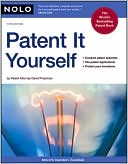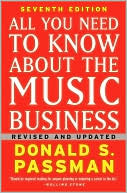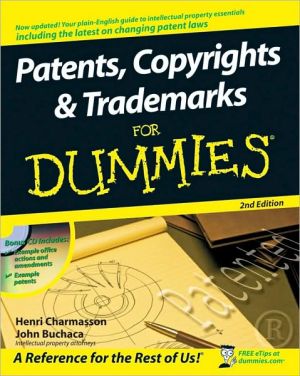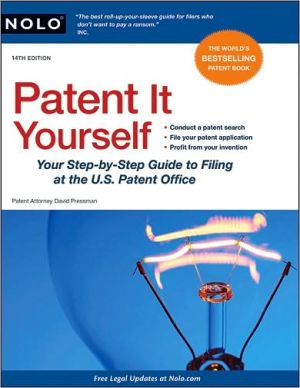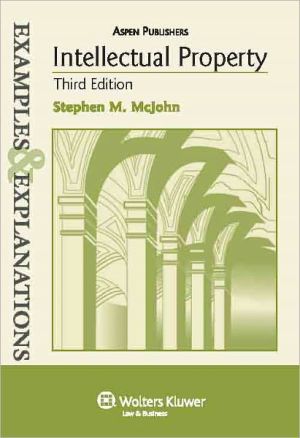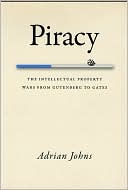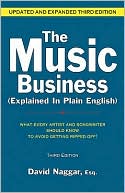Patent Searching: Tools & Techniques
Search in google:
Patent searches before prosecution help improve the defensibility of the future patent, and can dissuade the inventor from prosecuting at all. In our litigious society, the pre-examination preparation by an inventor, patent attorney, agent, or searcher can save the patent owner much time and money later on. But while quality patent searching is vital to intellectual property law, there are very few resources available on how an intellectual property professional should conduct a patent search. Patent Searching: Tools & Techniques provides a practical guide to the art and science of this task, along with essential information on patent law, patent search theory, and practice.Editor David Hunt and his team of contributors at Landon IP, Inc.—one of the largest privately held patent search, analysis, and consulting firms in the United States—have drawn on their experience working for approximately 2,000 companies and 1,000 IP law firms to create an indispensable reference to patent searching procedures and techniques. They detail key principles and approaches that will work regardless of the specific tools you use, covering everything from the basic types of patent searches (including patentability, validity, infringement, clearance, state-of-the-art, and patent landscape) to the mechanics of searching, patent analysis, reporting search results, and more. While the Internet has made simple searching easy, the volume of information available has in many ways made it less focused and harder to interpret findings. Patent Searching: Tools & Techniques helps professionals avoid information overload and identify just the information they need. It outlines criteria on how to select the most appropriate search tools and even provide current information on the major databases available. And with an abundance of illustrative tables, charts, and figures, this book makes complex material easy to read and understand.Whether you're a patent examiner, patent attorney, commercial patent searcher, patent liaison, IP librarian, law professor, or competitive intelligence analyst, you'll find Patent Searching: Tools & Techniques to be just the guide you have been waiting for, with a range of approaches to patent searching that will be useful to you regardless of your technical expertise or role in the intellectual property community.
About the Editors ixAbout Landon IP, Inc. xiAcknowledgments xiiiPreface xviiPatent Law and Examination as Context for Patent Searching 1The U.S. Patent System 2The Benefits of Patent Protection 3Harmonization of Patent Laws 4The Paris Convention 4The Patent Cooperation Treaty 5Trade-Related Intellectual Property Rights (TRIPS) 5American Inventors Protection Act of 1999 (AIPA) 5The Priority Date 6The U.S. Provisional Application 6Continuing Applications 6Nonprovisional Applications 6Sections of a Patent 7A Note about Reading the Specification and the Claims 8Sections of a Patent File History 8Look before You Leap: Considerations before Filing 10Patent Examination Process 11The Job of the Patent Examiner 12The Examiner Follows the Courts 12The Examiner Follows Patent Examining Procedure 12Administrative Handling of the Patent Application 12Actual Patent Examination 13The Examiner Reviews Cited Patents and Nonpatent Publications 15The Examiner Conducts an Inventor Search ("Double Patenting" Search) 16The Examiner Applies the References 17After Patent Grant 17Backlog of Patent Applications 18Types of Patent Searches 21Patentability 21What Is a Patentability Search? 21When Is a Patentability Search Needed? 22What Needs to Be Searched in a Patentability Search? 23What the Searcher Needs to Know to Search Successfully 23Validity 24What Is a Validity Search? 24When Is a Validity Search Needed? 24What Needs to Be Searched in a Validity Search? 25Infringement 26What Is an Infringement Search? 26When Is an Infringement Search Needed? 27What Needs to Be Searched in an Infringement Search? 27Clearance 28What Is a Clearance Search? 28When Is a Clearance Search Needed? 28What Needs to Be Searched in a Clearance Search? 29State of the Art 30What Is a State-of-the-Art Search? 30When Is a State-of-the-Art Search Needed? 30What Needs to Be Searched in a State-of-The-Art Search? 30Patent Landscape 31What is a Patent Landscape Search? 31Benefits of Prior Art Searching 31The Mechanics of Searching 35Introduction 35Properly Scoping the Search 37Identifying Subject Features: Problem-Solution Approach 37Generating Keywords 39Selecting Classification Areas 41U.S. Patent Classification (USPC) System 41USPC Index (www.uspto.gov/web/patents/classification/uspcindex/indextouspc.htm) 42USPC Keyword Search (www.uspto.gov/web/patents/classification/) 42Reviewing Closely Related Patents 43Finding Subclasses with the Help of a Patent Examiner 45IPC (International Patent Classification) 46ECLA (European Patent Office Classification) 47FI/F-Term 47Preparing Initial Text Queries 47Conducting the Search 51Evaluating Patent Documents 52The Sections of a Patent and Their Usefulness in Patent Searching 52Titles 52Abstracts 52Descriptions of the Invention 53Claims 53Drawings 53Determining Relevancy According to the Invention Subject Features 53Evaluating Patent Documents in Different Search Types 60Patentability and Validity as Applied to 35 United States Code (USC) [section] 102 and 103 60Identifying the Subject Features for a Patentability Search 60Identifying the Subject Features for a Validity Search 60Identifying the Subject Features for an Infringement Search 62Identifying the Subject Features for a Clearance or Freedom to Operate Search 62Classification Searching 63Core Classification Searching 64Peripheral Classification Searching 66Discrepancies in the U.S. Patent Classification System 67Full- Text Searching 68Citation Searching 72Backward Citation Searching 73Forward Citation Searching 73Searching Foreign Patent Documents 74Paris Convention for the Protection of International Property 75The European Patent Organization 76World Intellectual Property Organization (WIPO) 77Patent Cooperation Treaty (PCT) 77National Authorities 78Searching Full-Text Major Foreign Patent Documents 79Keywords in Foreign Languages and Simple Translations 79Using Machine Translators to Assess Foreign Art 80Searching Abstract-Only Databases 81Value-Added Tools 82Derwent World Patent Index (DWPI) 82Searching Nonpatent Literature (NPL) 82Issues Peculiar to Certain Technical Disciplines 84Biotechnology 84Biosis 87Biotechabs/Biotechds 87Chemical Abstracts 88Cab Abstracts 88Chemical 88Business Methods 90Computer, Software, and Electronics 92Mechanical Engineering 105Estimating Search Time 106Patent Analysis 109The Precursor to Patent Analysis 109Searches versus Analyses: What's the Difference? 110Features of Patent Analyses and Reporting 112Establish Clear Objectives 112The Importance of the Data 112The Trouble with Shortcuts 113Capturing the Data Set 114Processing the Results 115Displaying Results 116Sample Patent Analysis Report 117Approaches to Reporting Search Results 127Purpose of the Search Report 128Anatomy of a Search Report 129Writing a Summary 129Presenting the Subject Matter 130Discussing References 132Writing Discussions 134Example: Hamster Health Spa 135Indicating Claims 136Prioritizing References 137Central References 138Peripheral References 139Central and Peripheral References 140Search History 141Classification Areas 142Databases Accessed 143Examiners Contacted 143Conclusion 143Search Tools 145The Availability of Patent Information 145Criteria for Selecting Search Tools 146Data Coverage 147Document Delivery 147Import and Export Functions 148Pricing 148Usability 149Company Strength 149When to Select a Search Tool 150Breadth and Depth of Data Coverage 151Data Sources for Chemical Searches 151Data Sources for Mechanical Searches 154Data Sources For Electrical/Computer Searches 156Patent Data Sources for Electrical and Computer Searches 156NPL Sources for Electrical Searches 156Data Sources for Business Methods Searches 157Methods of Access 159Text Search Syntax 159Discussion of Specific Search Tools 160USPTO Search Room 160U.S. Patent and Trademark Depository Libraries (PTDL) 161Micropatent Patent Web 161Examiner Assisted Search Tool (EAST) 164Thomson Delphion 166Questel-Orbit 167PatAnalyst 167Minesoft PatBase 169Access to Nonpatent Literature 170The Internet 173The Internet Needs a Skilled Searcher 175Meta-Search Engines 175DialogWeb 175IP.com 176IEEE Xplore 176NCBI 177Searching Journals 177Conference Proceedings 178Newspapers, Magazines, and Catalogues 179Value-Added Capabilities of Search Tools 179Alerting 179Search History 179Information and Image Importing and Exporting 180Legal Status, Maintenance Fees, and Prosecution 181Costs 181Visualization 181Conclusion 182Index 183
